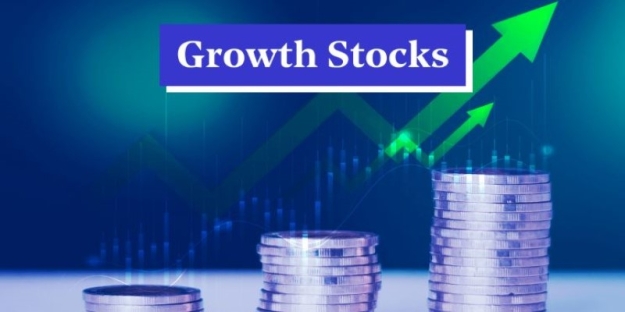
Choosing Between Value And Growth Stocks
Tooba
Are you wondering if your money would work harder in value stocks or growth stocks? Investors often face this crossroads when building their portfolios. Each approach comes with its rewards and risks, and the choice can shape your investment journey for years to come. Let's break it down with clear examples so you can decide which side of the fence you're on.
What Are Value Stocks?
Think of value stocks as companies that are like hidden gems—trading for less than what many believe they’re truly worth. Investors often see them as “on sale” compared to their actual business potential.
These companies may not be the fastest-growing, but they often have stable earnings, solid reputations, and a track record of surviving economic ups and downs. They’re typically in mature industries—think banking, manufacturing, or consumer goods—where growth is steady but not explosive.
Example: In 2008–2009, during the financial crisis, companies like Johnson & Johnson and Procter & Gamble saw their share prices drop, even though their underlying businesses remained strong. Those who bought at low prices often saw healthy gains in the years that followed.
Why Investors Choose Value Stocks
- Lower Valuation: Buying when the price is below estimated worth can reduce risk.
- Steady Dividends: Many value companies pay regular dividends, giving investors income along with potential price growth.
- Less Volatility: Price swings are often smaller than those of fast-growing tech companies.
What Are Growth Stocks?
Growth stocks are like high-speed trains—they move fast, often leaving traditional industries in the dust. These companies reinvest their profits into expansion, research, and innovation instead of paying dividends.

They usually operate in dynamic sectors like technology, healthcare innovation, or renewable energy. Investors buy them for their potential to grow earnings rapidly, sometimes doubling or tripling in just a few years if things go right.
Example: Amazon in the early 2000s wasn't profitable, but was rapidly expanding into new markets. Investors who held on through the volatility saw massive returns over the next two decades.
Why Investors Choose Growth Stocks
- Potential for Large Gains: Strong growth can lead to dramatic share price increases.
- Innovative Business Models: Often at the forefront of industry change.
- Market Leadership: Many growth companies dominate their niche or disrupt existing industries.
Comparing The Two Approaches
Choosing between value and growth often comes down to personal investing style and risk tolerance.
Value stocks tend to attract investors who prefer stability, predictable earnings, and income through dividends. Growth stocks appeal to those willing to accept more volatility in exchange for higher potential returns.
Here’s a quick way to think about it:
- If you prefer something that feels like owning a well-built house in a good neighborhood, value stocks may be your fit.
- If you’re okay with betting on a promising startup that could become the next industry leader, growth stocks might be more your style.
Risk And Reward
Every investment carries risk, but the type of risk differs.
Value Stocks Risk: Sometimes a stock is cheap for a reason—falling sales, outdated products, or poor management. This is known as a “value trap,” where the price never recovers.
Growth Stocks Risk: High expectations can lead to steep declines if earnings disappoint. Even a minor setback in sales or product development can send shares down sharply.
Case in point: In 2022, many technology growth stocks saw double-digit drops when interest rates rose and investors became more cautious about high valuations.
The Role Of The Economy
The performance of value and growth stocks can shift with economic cycles.
- In a strong economy, growth stocks often outperform because businesses can expand rapidly and investors are more willing to pay higher prices for future earnings.
- In a slower economy, value stocks can shine. Their stable cash flows and dividends provide comfort when growth prospects dim.
For example, during the recovery years after the 2008 crisis, growth stocks like Apple and Netflix dominated. But in certain years, like 2016, value stocks outperformed as investors turned to more traditional, dividend-paying companies.
Blending The Two
Some investors don’t choose one over the other—they hold both. This is known as a “blend strategy,” giving the portfolio exposure to the stability of value and the upside potential of growth.

A portfolio could, for instance, hold shares in a reliable dividend payer like Coca-Cola (value) alongside an innovative leader like Tesla (growth). This balance can help smooth out returns while still providing opportunities for significant gains.
Tips For Making Your Choice
Here are a few questions to ask yourself before deciding:
- What’s your risk tolerance? If market swings keep you awake at night, value stocks may suit you better.
- What’s your investment horizon? If you’re investing for decades, you might have the patience to ride out the ups and downs of growth stocks.
- Do you want income now or growth later? Dividends from value stocks can provide steady cash flow, while growth stocks focus on reinvesting for the future.
- Do you believe in the company’s story? Whether it’s value or growth, understanding and believing in a company’s long-term prospects is key.
Example Portfolios In Action
The Value-Focused Portfolio:
An investor might choose companies like JPMorgan Chase, Johnson & Johnson, and ExxonMobil. These provide dividends and steady performance, even in slower economic times.
The Growth-Focused Portfolio:
An investor may opt for companies like Alphabet (Google), Amazon, and NVIDIA. These are leaders in fast-moving industries with potential for rapid expansion.
The Blended Portfolio:
Holding a mix like Microsoft (which has both growth and dividend elements), Procter & Gamble, and Shopify offers a balance of stability and future upside.
Getting Started With Research
Whether you lean toward value or growth, research is essential. Look at financial statements, industry trends, and historical performance. Use metrics like the price-to-earnings (P/E) ratio for value, or revenue growth rates for growth.
Remember, no single metric tells the full story. For value, a low P/E might indicate a bargain or a troubled company. For growth, high revenue growth might be promising, but only if it's sustainable.
Choosing What Fits You
Choosing between value and growth stocks isn’t about a single right answer—it’s about aligning your investments with your comfort level, goals, and time frame. Some investors enjoy the thrill of chasing the next big winner, while others prefer the stability of proven companies.
The advantage is flexibility; you can adjust your approach as markets, companies, and personal situations change. Whether you lean toward value, growth, or a blend, staying informed and adaptable helps you get the best from your portfolio.




